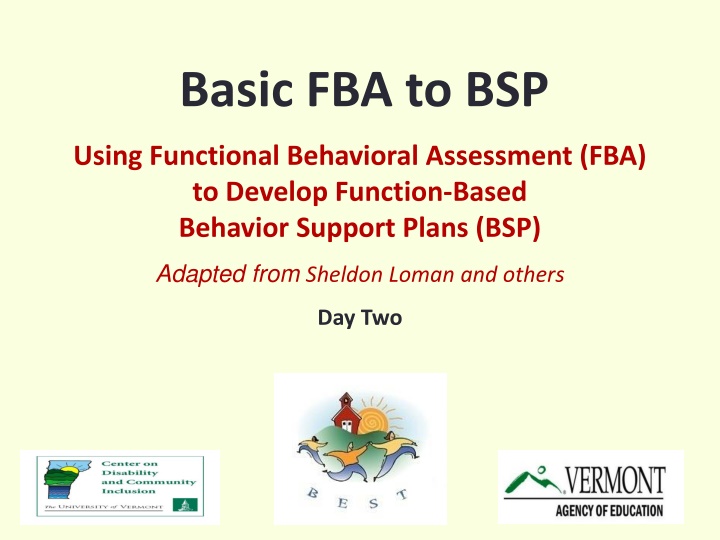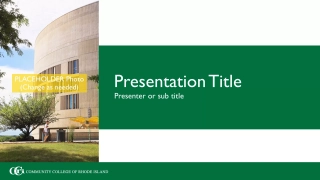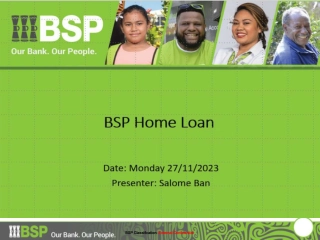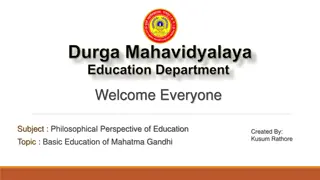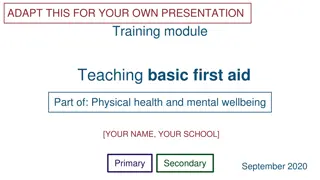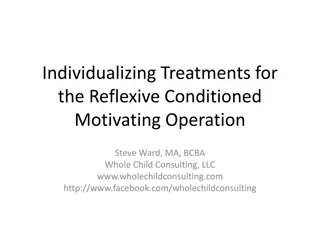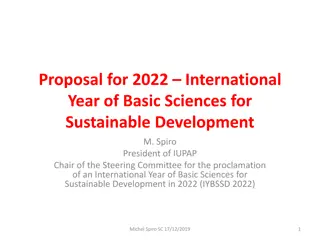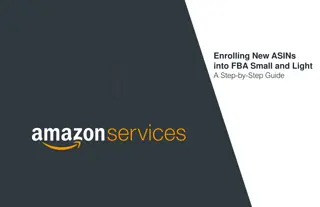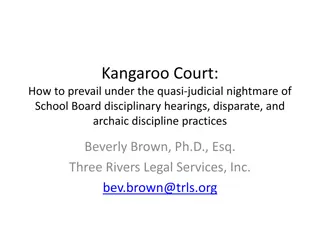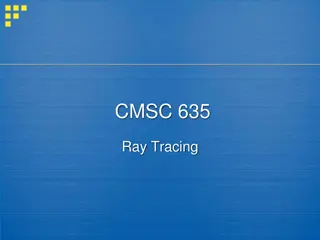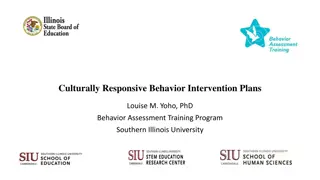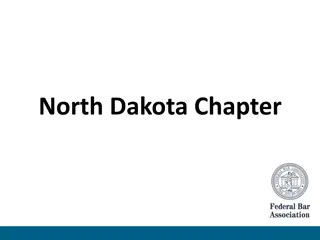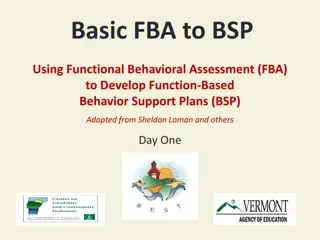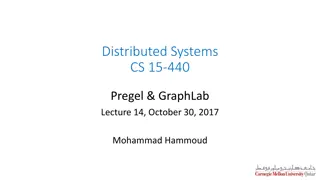Basic FBA to BSP
This resource provides guidance on using Functional Behavioral Assessment (FBA) to create Function-Based Behavior Support Plans (BSP), focusing on understanding behaviors, antecedents, consequences, and developing effective intervention strategies.
Download Presentation

Please find below an Image/Link to download the presentation.
The content on the website is provided AS IS for your information and personal use only. It may not be sold, licensed, or shared on other websites without obtaining consent from the author.If you encounter any issues during the download, it is possible that the publisher has removed the file from their server.
You are allowed to download the files provided on this website for personal or commercial use, subject to the condition that they are used lawfully. All files are the property of their respective owners.
The content on the website is provided AS IS for your information and personal use only. It may not be sold, licensed, or shared on other websites without obtaining consent from the author.
E N D
Presentation Transcript
Basic FBA to BSP Using Functional Behavioral Assessment (FBA) to Develop Function-Based Behavior Support Plans (BSP) Adapted from Sheldon Loman and others Day Two
Whats the function of the behavior that brought you here today? A. Get access to learning new skills B. Avoid being back at school C. Get a free lunch D. All of the above E. None of the above
Learning Objectives Day Two: Review learning from last week Develop a BSP for selected student Plan for installation of practice back at school
Activity 1: Homework Review As a team, debrief the additional information you gained as a result of interviewing team members back at school and conducting observations. Discuss the things you found useful and the questions that arose as a result of using the F- BSP Protocol. Finalize your hypothesis statement
Group Share: Tell us about your student! What is the: Observable behavior? Antecedent? Setting Event? Consequences? Hypothesis of Function of Behavior?
What do we do with this Information? If the team does not have confidence in the hypothesis If the team has confidence in the hypothesis Simple FBA Develop/Imp lement a Behavior Support Plan Gather More Information
Critical Components of Behavior Support Plans 1: Competing Behavior Pathway 2: Function-Based Behavior Support Strategies 3: Implementation Plan 4: Evaluation Plan
Behavior Support Plan (BSP) Two Goals 1. Reduce Problem Behaviors make them irrelevant, inefficient, and ineffective 2. Increase Appropriate Behaviors
FBA: Summary of Behavior Targeted Routine: ____________ Maintaining Consequence & Function Problem Behavior Antecedent FUNCTION is where student behavior intersects with the environment Function = Learning Student Learns that when (A), if I (B), then (C) Function = how I benefit so I keep doing B
Competing Behavior Pathway Desired Behavior Consequence/Function Desi Routine: Setting Event Antecedent Problem Behavior Consequence/Function Alternative Behavior But start with the Alternative Behavior. Why can t we go right to the Desired Behavior?
Why the Replacement Behavior? Why not go straight to the Desired Behavior? 3. Look how different this is from what s happening now 4. The student is going to need to gain numeracy skills before being able to do this like peers Routine: Math Class 1. This is what we re asking the student to do. Success, teacher acknowledgment Complete math assignment Poor grades in math class Given double- digit addition problems Crying, pushing papers off desk Sent to hall to calm down Function: escape task Raise hand & ask for break 2. This is what the student is currently obtaining. 5. So in the meantime we use the Alternative behavior
Essential Characteristics of Alternative Behaviors Serves the same function as the problem behavior Is easier to do and more efficient than the problem behavior Socially acceptable
Which of the Following are Appropriate Alternative Behaviors? Leslie is 12, has severe intellectual disabilities, does not use words, and screams during independent work times in the Life Skills classroom. Screaming is maintained by adult attention. Which is the best Alternative Behavior Put head down on her desk and sit quietly Sign more to another student Take completed work up to show the teacher Move to sit by another student Use picture communication system to request teacher help 1. Serve same Function? Does it provide adult attn? 2. Is Behavior easier to do than problem behavior? 3. Is Behavior Socially Acceptable?
Which of the Following are Appropriate Alternative Behaviors? Jason is nine and cries when asked to do difficult tasks. The crying is maintained by avoiding or escaping difficult tasks. Possible Alternative Behaviors: More rewards for doing tasks Ask for an easier task/ worksheet Ask to play w/ his Gameboy Appropriately request adult attention Ask to have soda after tasks are done 2. Is behavior easier to do than problem behavior ? 1. Serve same Function? Does it provide escape from difficult task? 3. Is Behavior socially acceptable?
Activity 2 Identify the desired behavior you ultimately want your student to demonstrate Identify an alternative behavior that serves the same function as the problem behavior is easier to do and more efficient than the problem behavior is socially acceptable Record your student s behavior pathway below. Assign one team member to use the sticky notes to post the competing pathway on the laminated chart. Prepare to present your student s competing pathway to others.
Behavior Support Plan (BSP) Antecedent Strategies Teaching Strategies Setting Event Strategies Consequence Strategies
Setting Event Strategies These are structural changes made to the students day or classroom Alternative Schedule Sitting Near the Teacher Lunch in the support room Student Check In Early or late entry to class/activity
Activity 3 Identify any setting event strategies or structural changes that could be made to your student s day or to the classroom Record in your workbook
Behavior Support Plan (BSP) Antecedent Strategies Teaching Strategies Setting Event Strategies Consequence Strategies
Antecedent Strategies Setting Event Strategies Manipulate Antecedent Teach Behavior Alter Consequences Antecedent strategies are designed to make problem behavior irrelevant by: Eliminate or Neutralize Setting Events Prevent/Modify Triggers Teach Alternate Behavior Reinforce Alt/Des Behavior 1. Eliminating or Modifying antecedents that trigger the behavior AND Prompts for Alt/Des Behavior Teach Desired Behavior/ Academic/ Social Skills Response to Problem Behavior/ Corrective Feedback 2. Prompting alternative/Desired behavior (pre- correction)
Identifying Antecedent Strategies When asked to read independently at his seat, Ronnie makes inappropriate noises and makes faces at peers. Based on the FBA data collected, the team agreed that the function of Ronnie s behavior is to obtain peer attention. Addresses: 1.Antecedent? Function? Which is the best antecedent modifying strategy? Provide student with an easier reading assignment Remind student of expectations related to respectful behavior Allow student to wear headphones during independent reading Ask student to work quietly 1:1 with a reading buddy Have student check in with the teacher at the beginning of class
Identifying Antecedent Strategies When Pam is asked to work on long-division problems in math class, she argues, refuses to work, and uses profanity to avoid/escapethe difficult task. Which is the best antecedent modifying strategy to prevent problem behavior? Why or Why Not? Move student s seat closer to the teacher Give student more time to complete the difficult tasks Give student an easier math assignment she can be successful with Warn student she will be sent to office for using profanity Allow student to practice long-division on the computer
Activity 4 Identify and describe a few antecedent strategies for your student that will: prevent or modify the triggers and prompt the alternative/desired behaviors
Behavior Support Plan (BSP) Antecedent Strategies Teaching Strategies Setting Event Strategies Consequence Strategies
Teaching Alternative Behavior Identify skill(s) to teach dual focus on both alternative and desired behavior First teach the alternative behavior teaching = review and practice regularly Then teach the desired behavior may be something to focus on immediately, or only after the student is fluent with the alternative behavior
Teaching Alternative Behavior Cont. Don t assume that the student already has the alternative behavior in his/her skill set Develop an observable definition of behavior identify examples & non-examples Teach, Model and Reinforce Schedule review and practice of the skill/behavior regularly
Teaching Strategies These are the skills the student will need to be taught to do *How to ask for a break using break card *How to monitor his/her progress with a point sheet *How to engage in appropriate conversations with peers during small group counseling
Activity 5 Summarize how you will teach, practice, and prompt alternative and desired behaviors for your student. Consider the following observable definition of behavior examples and non-examples Teach, Model and Reinforce schedule review and practice of the skill/behavior regularly
Behavior Support Plan (BSP) Antecedent Strategies Teaching Strategies Setting Event Strategies Consequence Strategies
Consequence Strategies Consequence strategies help make problem behavior ineffective by: Setting Event Strategies Manipulate Antecedent Teach Behavior Alter Consequences Prevent problem & prompt alternate / desired behaviors Explicitly teach alternate and desired behaviors Reinforce alternate & desired behavior Extinguish negative behavior 1. Reinforcing appropriate behaviors Eliminate or Neutralize Setting Events Modify or Prevent Triggers Teach Alternate Behavior Reinforce Alternative/Desire d Behaviors Teach Desired Behavior / Academic Skill / Social Skill 1. Minimizing reinforcement for problem behaviors Prompt Respond to Problem Behavior with Redirection or Extinction Alternative/Desi red Behaviors
Only Two Basic Functions Problem Behavior Negative Reinforcement Escape/ Avoid Something Positive Reinforcement Obtain/Get Something Stimulation/ Sensory Tangible/ Activity Social from Horner & Sugai at www.pbis.org Adult Peer
Reinforcing Alternative and Desired Behavior
Consequences: Reinforcing the Alternative Behavior It is extremely important that the alternative behavior is reinforced: Immediately Consistently and Results in the same type of reinforcement as the problem behavior (serves the same function) This is necessary for the alternative behavior to successfully compete with the problem behavior. In other words, the problem behavior cannot happen if the student is exhibiting the desired behavior they can t happen at the same time!
Considerations for Reinforcing Desired Behavior Reasonable goals and expectations Reasonable timeframes Valued reinforcers
Identifying Consequence Strategies: Reinforcing Alternative/Desired Behavior During independent seatwork, Ronnie makes inappropriate noises and makes faces at peers. The function of Ronnie s behavior is to obtain peer attention. Which are the best reinforcement strategies? Function? Reasonable expectations? Student is allowed to sit by a preferred peer for 15 minutes, if he is quiet and on task during seatwork every day for a week Student will receive a free homework pass if he has no problem behavior during independent seatwork When student is on task with no problem behavior for 15 minutes, he will be allowed to sit at back table and read with a peer Student receives frequent teacher praise for staying on task Student is allowed to work with a peer when asks appropriately
Identifying Consequence Strategies: Reinforcing Alternative/Desired Behavior During independent reading time in language arts, Audrey makes noises, talks out, and walks around the room. The FBA has shown that this behavior is maintained byadult attention. Which are the best reinforcement strategies? Why or Why Not? Student can play a game with the teacher if she works quietly (no more than 2 talk-outs) during independent reading Student is allowed to work with a peer when she has been quiet for 15 minutes Student receives help from teacher if asks appropriately Student can eat lunch with the teacher if no talk-outs for one month Student earns a homework pass for on-task behavior
Consequences: Responding to Problem Behavior Responses to Problem Behavior should focus on two things: #1. Redirecting to the Alternative Behavior #2. Extinction of the Problem Behavior
Responding to Problem Behavior: Redirection At the earliest signs of problem behavior, quickly redirect to the alternative behavior Example: During independent work, Annie often talks out to get teacher attention. If ignored, Annie will begin yelling and knocking materials off her desk. When Annie first starts talking out, her teacher will immediately remind her how to appropriately get adult attention and will praise Annie s use of the alternative behavior.
Responding to Problem Behavior: Extinction Do NOT allow the problem behavior to work or pay off for the student. Eliminate/minimize the amount of missed instructional time or work provided to a student for engaging in problem behavior But make sure student is capable of doing work or provide support/instruction so student can complete the work Eliminate/minimize the amount of attention for engaging in problem behavior Limit verbal interactions/explanations Create a signal to cue the student to use the alternative behavior instead
Responding to Problem Behavior: Extinction ** Note: extinction should ALWAYS be combined with frequent reinforcers for alternative/desired behavior. Example: Darci engages in problem behavior that results in peer attention. Darci s peers will receive Panther Paws for ignoring her inappropriate behavior. Darci will also be learning how to interact (and provided frequent opportunities to practice interacting) with peers appropriately and will earn time with peers for alternative/desired behavior.
Activity 6 Identify and describe the consequence strategiesfor your student that will reinforce alternative and desired behaviors according to function, and minimize reinforcement of problem behaviors through redirection or extinction
